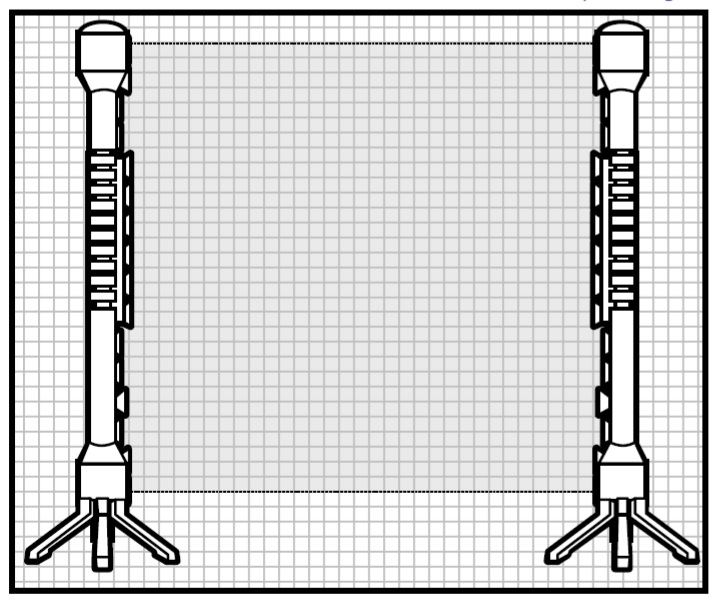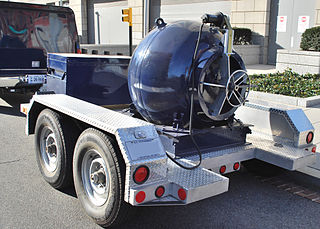October 9, 2019 - 4:33pm | It’s just me and my skeinsuit, thought Raye Veektum as he approached the unexploded bomb that had been planted by a sathar agent. A few dozen meters away, Veektum’s companions were busy evacuating the crowded monorail station. Not having any dedicated tools of his own, he had borrowed the techkit that belonged to Jill Lucky, one of his companions. Jill's closest brush with danger thus far was hot wiring the ground car that they used to get here. Sweat began dripping from his brow as he contemplated his chances of success. Oh why didn’t I splurge on that Demolitions-CAS when I had the chance? Veektum wondered before he began. If I fail to disarm the bomb, will the skeinsuit be enough to protect me? After several moments of examining the detonator, Veektum began working on it when suddenly a flash of light blinded him as a wave of heat enveloped his body… Technicians can purchase techkits. Characters with the robotics skill can buy a robocomkit. Medics get medkits, while an environmentalist can pick up an envirokit to assist them with their tasks. But, except for the Demolition-CAS (Computer Analysis Scanner) that was introducedin Zebulon’s Guide, the demolition specialist has very little specialized equipment presented in the Star Frontiers game to enhance their skills. In actuality, the Core Four races would have developed a variety of equipment to defuse and dispose explosives. Some of this gear includes blast suits, which are designed to protect demolition experts when they are defusing unexploded bombs. Various other tools are available. Then there are Explosion Containment Vessels (ECVs) that can be used to transport munitions or store suspicious objects. Joe Cabadas |
November 5, 2019 - 5:30pm | Some additions to the inertia wall section: Wall Screen, Inertia. Introduced in Star Frontiersman, issue 5, inertia wall screens come in several sizes and can be used to limit the blast damage of explosive bombs. The wall operates on the same principal as a personal inertia screen, but it protects a larger area. A basic set consists of two poles and a control cabinet. These are linked by heavy cables and can be powered off of a type 1 parabattery, a generator, or a city power grid. The poles of the basic set are 2 meters tall. The base can be rammed into the ground or a four-legged stand can be attached to provide stability when the ground is too hard (such as a roadway). Bomb squads will often use self-driving spikes to anchor the poles to the surface to prevent them from being easily blown over by the wind let alone an explosive blast. The poles can be placed 10 meters apart from each other, which is good enough to protect up to 10 characters standing side-by-side, for example. The control cabinet consists of a a simple touch screen atop a small box where the parabattery is placed. The cabinet also has an outlet so it can be plugged into a generator or a power grid. The inertia wall is turned on and off by the controller, which also determines the screen's polarity determined by a simple selector switch. The polarity refers to which direction objects can travel freely – protected characters can shoot projectiles out of the screen as effectively as if it weren’t there. Once activated, the Inertia Wall is more effective than a standard screen. It will completely halt all inertia-based attacks coming from the direction protected against. The parabattery drains 2 SEU per turn. For every die of damage that would have been caused to someone on the other side of the wall, subtract an additional 2 SEU (or2 SEUs per 10 points of damage). When the Parabattery is drained, the inertia wall fizzles and dissipates. Note, a person cannot walk through the inertia wall’s protective field from one direction, but can from the other. Standing within the inertia field wall is dangerous because it messes with the body’s own electromagnetic process. Anyone within the field takes 1d10 points of damage per turn. Clever opponents will fire at the poles or the controller cabinet with energy-based weapons (the wall protects the poles against inertia damage). These can take 100 structural points of damage before being destroyed. Multiple and Larger Poles: Additional inertia poles can be purchased, which can be used to extend the length of an inertia wall. The poles can only be, at most, 10 meters away from each other. Corporations, municipalities, military and paramilitary units will often purchase multiple poles. These can be operated by one control unit, but will need more power. Larger wall screen poles can be purchased, including those that are 5- and even10-meters tall. These fields use more power. The 5-meter-tall wall drains 10 SEU per turn per section while the 10-meter-tall wall drains 20 SEU per turn per section. For every die of inertia damage absorbed by the wall (or for every 10 points), the walls drains 2 SEUs from its power source. Use Against Bombs: Bomb squads have placed inertia walls partially or completely around a suspected explosive – whether it is a package left at a monorail terminal or a car bomb. The walls not only will absorb damage from an explosion, but may direct some or maybe even all of blast effects away from other nearby structures and people. In essence, the walls will create a shaped charge. Example, Star Law rangers have set four walls around an unexploded Type III missile warhead that was discovered in a field after a recent HUSP separatist attack on the planet of Pale. The rangers have placed one wall section per side of a 5-meter square. If the warhead suddenly explodes, most of the force will be directed upward, into the air. The protection afforded by inertia walls against a bomb will depend on how close the walls are placed to the weapon, how they are arranged, how tall the wall’s poles are, and the power of an explosion. If you are using the optional, expanded sub-skills for a Demolition expert, they would need to make a successful check against “Analyze Demolition Site,” which in this case would be ½ LOG/INT + 10% per skill level. This would allow the specialist to determine where and how many screen walls need to be placed. Assuming the character(s) have enough screen wall poles – and a bomb explodes rather than being defused successfully – the protected side(s) will only take 10-50 percent of the normal damage while any unshielded sides will take normal damage. Roll a 1d5 x 10 to determine how much damage a particular wall section will take, In the case where walls completely surround a bomb – say on the ground – much of the explosive force will be directed upward. However, with a very large explosion, the shockwave – the blast incident overpressure – could spill over the inertia wall and still damage characters and objects within the “protected” area. If the poles are placed within an area where the explosion would cause a crater, their protective effect would also be nullified. Joe Cabadas |
November 5, 2019 - 5:32pm | Self-Driving Spikes. These devices have federanium-tipped plastisteel spike. It consists of a driver base, powered by a 2 SEU microdisc. With the press of a button – which is on top of the base –the spike can be driven into most surfaces without the use of a hammer. It will make a loud popping sound when doing so. Depending upon the surface, the spikes can hold up to 1,000 kg of weight. Multiple spikes may increase that holding power exponentially. To remove the spike, the operator needs to press the button five times in rapid succession. It has enough power for five uses.
Joe Cabadas |
November 5, 2019 - 5:44pm | Inertia Wall illustration from Star Frontiersman, issue 5:  Joe Cabadas |
November 5, 2019 - 5:50pm | An explosion containment vessel. Photo from the FBI.  Joe Cabadas |
November 6, 2019 - 4:37am | Some additions to the inertia wall section: Wall Screen, Inertia. Introduced in Star Frontiersman, issue 5, inertia wall screens come in several sizes and can be used to limit the blast damage of explosive bombs. The wall operates on the same principal as a personal inertia screen, but it protects a larger area...." Cutting out the wall screens from the near final version of the story to save space. That trims about 1,100 words. Joe Cabadas |
November 6, 2019 - 4:41am | Anti-Handling Devices Anti-handling devices are attachments or even a basic parts of aerial dropped bombs, landmines, or improvised explosive devices (IEDs). These booby-traps are designed to discourage anyone from tampering with a bomb, causing it to explode and kill or injure anyone within the blast area... This will have to go too. It will save about 250 words. Joe Cabadas |
November 6, 2019 - 4:45am | And goodbye to the still undefined disarming drone. ...A disarming drone, which is far cheaper and smaller than a robot, can also be placed insidea ECV so a character can remotely attempt to disarm a bomb rather than blowing it up. The advantage here is preserving evidence to help find the bomber....
Disarming Drone. Much smaller and simpler than the LEON demolitions robot, the remote-controlled disarming drone is designed to beplaced inside an ECV that is rated at 1 kg of TNT equivalent or larger. A demolition specialist … TBD Joe Cabadas |
November 7, 2019 - 9:34am | I was looking a bit more into the technology of water disruptors so what follows is more in line with today's technology. Water Disruptors. Water disruptors can be used to neutralize an improvised explosive device (IED) without causing it to detonate. Using ashaped charge, it essentially fires jet of water into the IED, which cuts the detonator cord, rendering the explosive useless. A drawback of this device isthat it needs to be very close to the explosive to be effective. This might risk setting off bombs that have proximity, motion or similar style detonators while the demolition expert – or a robot – sets the water disruptor in place. These devices come in different sizes, such as the “mini-can” that can be used against small suspected explosive packages, upto 5 kilograms; or the “water buster,” which fires an omnidirectional jet of water and can be set under a vehicle where an IED has been placed. A water disruptor will work faster than any fuse or anti-tampering device can react. The operator loads the mini-can disruptor onsite with a combination of a 10 gram, shaped charge of TD-20, water and salt. Thewater buster uses 20 liters of water and a 50 gram, shaped charge of TD-20; again it is typically loaded by the operator onsite. Both of the mini-can and water buster are reusable and are sold with five charges and salt packets. Game use: The character would still need to makea successful defuse explosive check with a 5 percent bonus. A suspected explosive will detonate at full strength if the character misses his roll by more than 20 percent – or rolls an automatic failure. The mini-can is good against bombs upto about 5 kg of TNT equivalent while the water buster can be used against artillery shells, mines, and aerial dropped bombs. Joe Cabadas |
November 7, 2019 - 2:05pm |
Joe Cabadas |
November 7, 2019 - 2:06pm |
Joe Cabadas |
November 7, 2019 - 2:06pm |
Joe Cabadas |
November 7, 2019 - 4:36pm |
Joe Cabadas | ||||||||||||||||||||||||||||||||||||||||||||||||||||||||||||||||||||||
November 7, 2019 - 5:52pm |
Joe Cabadas | ||||||||||||||||||||||||||||||||||||||||||||||||